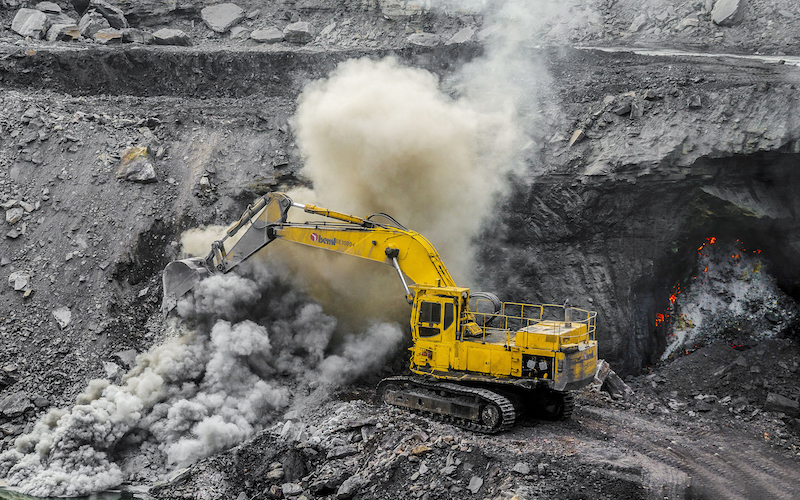
Sustainable Mining: A Global Problem Demands a Global Solution
Environmentally irresponsible mining is a longstanding problem, but the global focus on sustainability and green industry is drawing ever-increasing attention to the issue. In developing regions across Africa, Asia, and South America, unsustainable (and in many cases illegal) mining operations bear responsibility for the destruction of local communities and degradation of the quality of life for thousands of residents. All over the planet, unscrupulous mining companies, criminal organizations, and corrupt officials have polluted water supplies, destroyed fertile land, and damaged the local ecosystem in pursuit of profits.
Whether it is Brazilian gold prospectors operating illegally in the Amazon or iron mines polluting local villages in India’s state of Goa, the problem requires urgent action. In the past, concerns about illegal mining have often focused on the economic damage done to an individual nation’s finances by the theft of natural resources. Today, however, the spotlight has begun to shine on the environmental devastation that illegal mining can bring to a region and, by extension to the global ecosystem.
Using both legal and law enforcement tools, policymakers in South America and in Asia are taking action to address some of the most egregious excesses of the mining industry. Brazilian environmental officials have started to raid gold mining camps, and Malaysian leaders have instituted a moratorium on pollution-heavy bauxite mining in the state of Pahang.
With 60% of the world’s largest rainforest within the borders of Brazil, officials have begun to take a more forceful line in dealing with the number of illegal mining operations being uncovered there. In a recent statement, WWF-Brazil estimated the number of miners currently active in the Amazon to be in the tens of thousands.
While the overall level of deforestation from mineral extraction is far smaller than that caused by agriculture, the highly localized impact of mining operations can destabilize entire ecosystems: the Carajas Mineral Province alone loses 6,100 square kilometers of rainforest to mining every year.
While the Brazilian government has tried to combat illegal gold mining before, it has met with only limited success. The dense rainforest makes locating the mines with satellite technology nearly impossible, and policing the vast rainforest on the ground is a mammoth task.
Similar stories of environmental degradation wrought by mining can be found in other parts of the world. The Indian state of Goa is known for its natural beauty and sun-soaked beaches, enjoying a well established tourist trade. Unregulated mining, however, blights Goa’s eastern forests, destroying rivers, forests, and entire hills in the search for iron ore. In exchange for bribes and campaign funding, local officials were happy to issue unwarranted environmental clearances. The central government, meanwhile, did little to intervene: The Ministry of Environment & Forests once cleared more than 150 mining projects in Goa in just over an hour.
Revelations that illegal mining in Goa and the neighboring state of Karnataka cost the state exchequer hundreds of millions of dollars finally prompted action, and the state government moved to suspend all mining operations in Goa in September 2012. That determination, however, did not last long. The ban was lifted in April 2014, under the condition that extracting iron ore would require clearance from both the environmental ministry and the state government. All permits issued after 2007 were declared illegal and required re-issuing. These steps, however, did not change the culture of corruption that had characterized the industry before the ban. Just within the past few days, local activists and residents attempting to stop the transport of illegal iron ore have been detained and assaulted while in custody.
In Pahang, Malaysia, a sudden boom in largely illegal bauxite mining has been spurred on by Chinese demand and a ban on exports from neighboring Indonesia. As mining companies extract the lucrative mineral from the ground, they cause potentially irreparable damage to the surrounding areas and in particular to local water supplies. Tests conducted by Malaysian scientists show water in Pahang now contains dangerous levels of mercury, arsenic, and heavy metals. When pollution levels grew so extreme that the seawater just offshore turned red (as a result of bauxite sediment runoff), officials were forced to warn against consuming seafood caught in the area. While the governmental response to the environmental crisis came slowly, it was emphatic: the Malaysian state outright banned bauxite mining in Pahang for three months beginning in January 2016, a ban that was extended for three more months in April.
At the national level, initiatives to control mining activities and prevent high-pollution operations are too often half-hearted or dropped altogether. A comprehensive solution would require clear and strictly enforced legal frameworks for mining worldwide. As the majority of the customers for these mineral products are located in more affluent markets abroad, public pressure and drives for industry transparency should be employed to ensure no illegally sourced minerals find their way into international supply chains. This solution has already enjoyed proven success when applied to the diamond industry. While blood diamonds, or diamonds sourced from conflict zones, were once a major concern, a concerted international effort helped create the Kimberley Process Certification Scheme in 2003. Though the Kimberley Process, diamond shipments are required to have government-issued certificates and both buyers and sellers of rough diamonds commit themselves to using legitimate sources.
A similar process was launched in 2011 with the launch of Fairtrade gold, which brings to public awareness many of the issues around gold mining and allows customers to know their products have been created from ethically sourced metal. The Fairtrade Foundation also launched Fairtrade silver in 2013, with further Fairtrade metals likely to follow in future.
So far, Fairtrade gold accounts for only 5% of worldwide gold sales. Once combined with a strong legal framework and an increased public awareness of illegal mining, however, it could prove to be the most effective method of controlling illegal mining and the damage suffered by our shared environment.

